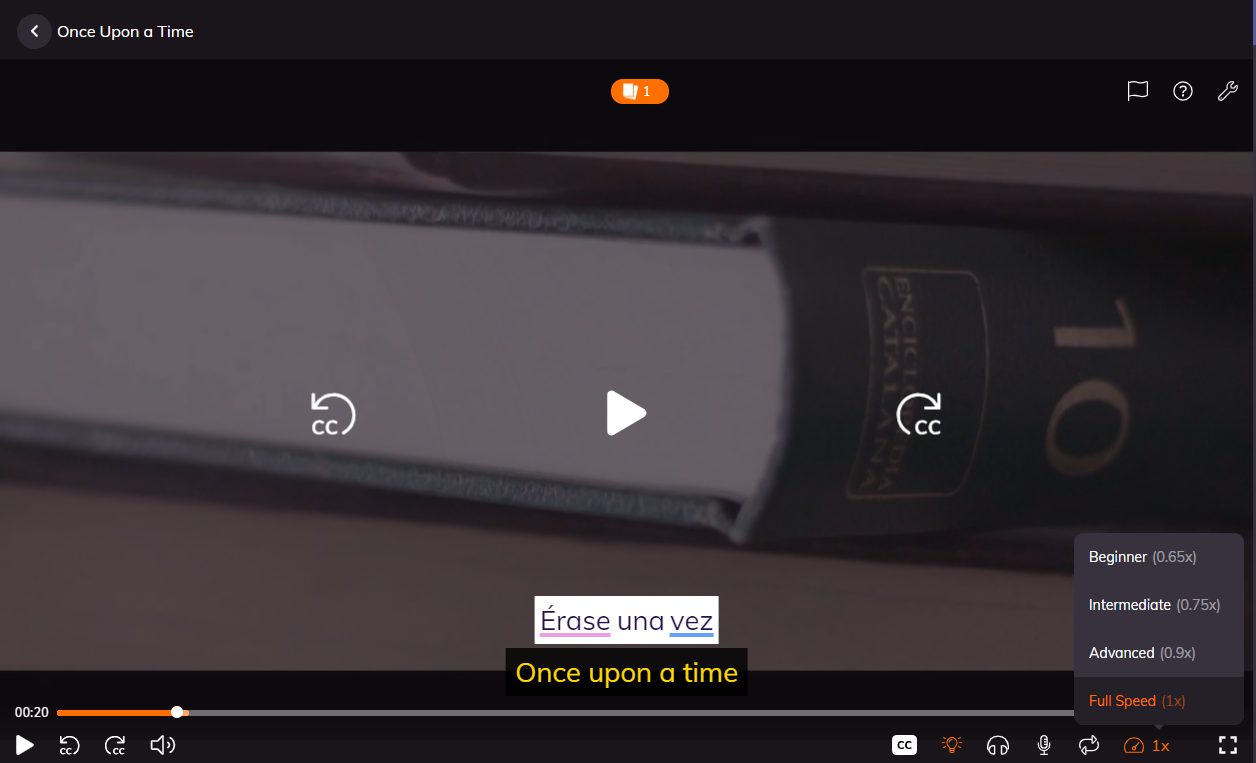Best language learning apps
written by: Krystof-Sandor Harfst
Table of Content
Short comparison of all language learning apps
Below is a comprehensive overview of various language learning apps, including their pricing, available languages, teaching methods, as well as their advantages and disadvantages.
| App | Price | Languages | Methods | Advantages | Disadvantages |
|---|---|---|---|---|---|
| Rosetta Stone | Starting from $12/month | Multiple | Immersive learning method; focus on listening and speaking skills without translations or explanations | - Immersive learning experience - Focus on listening and speaking skills | - Lack of explanations - Relatively high subscription cost |
| Babbel | Starting from $6.95/month | Single and multiple | Communicative approach; practical skills needed for real-life conversations | - Affordable subscription plans - User-friendly interface | - Limited depth in advanced language topics - Community aspect may not appeal to all users |
| Busuu | Starting from $6.66/month | Multiple | Combination of methods | interactive exercises | vocabulary drills |
| Duolingo | Free version available | Multiple | Gamified approach; progress through lessons by completing exercises | earning points | and leveling up |
| Mondly | Starting from $9.99/month | Multiple | Short | colorful lessons organized into modules on different topics | interactive exercises |
| Lingopie | Starting from $13.99/month | Multiple | Immersive learning through TV shows and movies | dual subtitles for comprehension | vocabulary lists |
| Pimsleur | Starting from $14.95/month | Multiple | Audio-based learning; focus on listening and speaking skills through repetition and conversation practice | - Focus on listening and speaking skills - Audio-based learning for on-the-go practice | - Limited emphasis on reading and writing skills - Less interactive compared to some other platforms |
| Memrise | Starting from $8.99/month | Multiple | Spaced repetition system for vocabulary acquisition | interactive exercises | audio clips |
| Ling App | Free version available | Multiple | Interactive lessons | quizzes | flashcards |
Do Language Learning Apps Work?
Language learning apps are handy tools on your phone or computer. They're great because you can learn whenever you have time. Some apps make learning fun by turning it into a game. They give you points and levels as you learn.
But these apps aren't perfect. They mostly focus on learning words and basic grammar. They might not help you speak fluently in real situations. Also, just using the app sometimes won't make you fluent. You need to use it regularly and practice a lot.
In the end, language apps can be useful for learning, but they're not enough on their own. To really become fluent, you need to practice speaking with people and use the language in real life. So, while apps can help, they're just one part of learning a new language.
How I tested language learning apps
When comparing language learning apps, several factors come into play. Here's a breakdown of how I assessed them:
- Price: I looked at the cost of each app, considering whether it offers free features, subscription plans, or one-time purchases.
- Languages: I examined which languages each app offers for learning, ensuring they align with the user's language goals.
- Methods: I evaluated the teaching methods used by each app, including vocabulary drills, grammar lessons, conversation practice, and immersion techniques.
- Overview of advantages and disadvantages: I created an overview of all good and bad sides of the app I was testing.
Rosetta Stone
Rosetta Stone is a well-known language learning software that has been used by millions worldwide. Here's a breakdown of its key features:
Price: Rosetta Stone offers subscription plans starting from $12 per month. Additionally, there may be discounts available for longer subscription durations.
Languages: Rosetta Stone offers courses in multiple languages, including Spanish, French, German, Italian, Chinese, Japanese, and more. Users can choose from a wide range of languages to learn.
Methods: Rosetta Stone employs an immersive approach to language learning, focusing on listening and speaking skills without translations or explanations. The method is based on immersion in the target language, with lessons structured around vocabulary, grammar, pronunciation, and comprehension.
Here's a comparison table outlining the advantages and disadvantages of Rosetta Stone:
| Advantages | Disadvantages |
|---|---|
| Immersive learning experience | Lack of explanations |
| Focus on listening and speaking skills | Limited flexibility in learning pace |
| Structured lessons for comprehensive learning | Relatively high subscription cost |
| Access to online tutoring sessions | Speech recognition may be inconsistent |
| Polished and accessible content | Less engaging compared to some competitors |
Babbel
Babbel is another popular language learning platform known for its user-friendly interface and structured lessons. Let's explore its key aspects:
Price: Babbel offers subscription plans starting from $6.95 per month. Users can also opt for longer subscription durations, which may offer discounted rates.
Languages: Babbel offers courses in a variety of languages, including Spanish, French, German, Italian, Portuguese, Dutch, Swedish, and more. It provides a wide range of options for learners to choose from.
Methods: Babbel utilizes a communicative approach to language learning, focusing on practical skills needed for real-life conversations. Lessons cover vocabulary, grammar, pronunciation, and cultural insights through interactive exercises, dialogues, and speech recognition.
Here's a comparison table highlighting the advantages and disadvantages of Babbel:
| Advantages | Disadvantages |
|---|---|
| Affordable subscription plans | Limited advanced features |
| User-friendly interface | Less emphasis on immersion compared to some apps |
| Structured lessons for gradual progression | May not be suitable for more advanced learners |
| Clear explanations and examples | Some languages may have less content available |
| Mobile app available for convenient learning | Less engaging compared to some competitors |
In summary, Babbel offers an accessible and effective language learning experience with its structured lessons and practical approach. While it may lack some advanced features found in other platforms, it remains a solid choice for beginners and intermediate learners looking to build their language skills at an affordable price.
Busuu
Busuu is a language learning platform recognized for its community-based approach and interactive lessons. Let's explore its key characteristics:
Price: Busuu offers subscription plans starting from $6.66 per month. Users can also opt for longer subscription durations, which may offer discounted rates.
Languages: Busuu offers courses in numerous languages, including Spanish, French, German, Italian, Portuguese, Russian, Japanese, and more. It provides a diverse selection of languages catering to different learner needs.
Methods: Busuu employs a combination of methods, including interactive exercises, vocabulary drills, grammar lessons, and speaking practice. One notable feature is its community aspect, allowing users to interact with native speakers for language exchange and feedback.
Here's a comparison table outlining the advantages and disadvantages of Busuu:
| Advantages | Disadvantages |
|---|---|
| Affordable subscription plans | Limited depth in advanced language topics |
| Diverse selection of languages | Community aspect may not appeal to all users |
| Interactive lessons for engaging learning experience | Speech recognition feature may be inconsistent |
| Access to native speaker interaction | Some languages may have less content compared to others |
| Mobile app available for on-the-go learning |
In summary, Busuu offers an interactive and community-driven language learning experience at an affordable price. While it may have limitations in advanced language topics and the community aspect may not be suitable for everyone, it remains a solid choice for learners seeking engaging and diverse language learning content.
Duolingo
Duolingo is a widely-used language learning platform known for its gamified approach and accessibility. Here's an overview of its key features:
Price: Duolingo offers a free version of the app with ads and limited features. It also provides a Duolingo Plus subscription starting from $6.99 per month, which offers an ad-free experience and additional features.
Languages: Duolingo offers courses in a variety of languages, including Spanish, French, German, Italian, Portuguese, Japanese, Chinese, and more. It provides a broad selection of languages catering to different learner interests.
Methods: Duolingo employs a gamified learning method, where users progress through lessons by completing exercises, earning points, and leveling up. Lessons cover vocabulary, grammar, reading, writing, listening, and speaking skills, with a focus on repetition and reinforcement.
Here's a comparison table outlining the advantages and disadvantages of Duolingo:
| Advantages | Disadvantages |
|---|---|
| Free version available | Limited depth in advanced language topics |
| Gamified approach for engaging learning | Less structured compared to some other platforms |
| Broad selection of languages | Overemphasis on translation exercises |
| Mobile app available for convenient learning | Speech recognition feature may be inconsistent |
| Community aspect for motivation and support |
In summary, Duolingo offers an accessible and engaging language learning experience with its gamified approach and broad selection of languages. While it may have limitations in advanced language topics and structure compared to other platforms, its free version and community aspect make it a popular choice for beginners and casual learners.
Lingopie
Lingopie is a language learning platform that focuses on immersive learning through TV shows and movies. Let's explore its key features:
Price: Lingopie offers subscription plans starting from $13.99 per month. Users can also opt for longer subscription durations, which may offer discounted rates.
Languages: Lingopie offers content in various languages, including Spanish, French, German, Italian, Portuguese, Russian, and more. It provides a diverse selection of languages for learners to choose from.
Methods: Lingopie uses an immersive learning method by providing access to TV shows and movies in the target language. Users can watch with dual subtitles (in the target language and their native language), access vocabulary lists, and engage with quizzes to reinforce learning.
Here's a comparison table outlining the advantages and disadvantages of Lingopie:
| Advantages | Disadvantages |
|---|---|
| Immersive learning through TV shows and movies | Relatively higher subscription cost |
| Access to content in various languages | Limited to learning through entertainment content |
| Dual subtitles for comprehension | May not be suitable for structured learning |
| Vocabulary lists and quizzes for reinforcement | Limited depth in grammar explanations |
| Mobile app available for convenient learning |
In summary, Lingopie offers an immersive language learning experience through entertainment content. While it may have limitations in structured learning and grammar explanations, its diverse language options and dual subtitle feature make it a suitable choice for learners looking to learn through engaging media.
Ling App
Ling is an easy and effective way to learn Asian and Eastern European languages all through fun, bite-sized lessons. . Let's explore its key features:
Price: Ling App offers subscription plans starting from $7.99 per month. Users can also opt for longer subscription durations, which may offer discounted rates.
Languages: Ling App offers courses in various languages, including Spanish, French, German, Italian, Portuguese, Japanese, Chinese, and more. It provides a diverse selection of languages to cater to different learner preferences.
Methods: Ling App utilizes a combination of methods, including interactive exercises, vocabulary drills, grammar lessons, and speaking practice. It also offers features like flashcards, quizzes, and progress tracking to aid in learning.
Here's a comparison table outlining the advantages and disadvantages of Ling App:
| Advantages | Disadvantages |
|---|---|
| Affordable subscription plans | Limited depth in advanced language topics |
| Diverse selection of languages | Less emphasis on immersion compared to some apps |
| Interactive lessons for engaging learning experience | Speech recognition feature may be inconsistent |
| Flashcards, quizzes, and progress tracking | Limited to learning through app-based exercises |
| Mobile app available for convenient learning |
In summary, Ling App offers an accessible and engaging language learning experience with its interactive lessons and diverse language options. While it may have limitations in advanced language topics and immersion, its affordability and variety of features make it a suitable choice for learners seeking a comprehensive language learning app.
Pimsleur
Pimsleur is a language learning program known for its audio-focused approach and focus on speaking and listening skills. Let's delve into its key aspects:
Price: Pimsleur offers subscription plans starting from $14.95 per month. Users can also opt for longer subscription durations, which may offer discounted rates.
Languages: Pimsleur offers courses in numerous languages, including Spanish, French, German, Italian, Portuguese, Russian, Japanese, and more. It provides a diverse selection of languages catering to different learner preferences.
Methods: Pimsleur employs an audio-based learning method, focusing on listening and speaking skills through repetition and conversation practice. Lessons consist of audio recordings where learners listen, repeat, and respond to prompts.
Here's a comparison table outlining the advantages and disadvantages of Pimsleur:
| Advantages | Disadvantages |
|---|---|
| Focus on listening and speaking skills | Limited emphasis on reading and writing skills |
| Audio-based learning for on-the-go practice | Less interactive compared to some other platforms |
| Structured lessons for gradual progression | Limited depth in vocabulary and grammar explanations |
| Repetition-based method for reinforcement | May feel slow-paced for some learners |
| Access to courses in various languages |
In summary, Pimsleur offers a focused and structured approach to language learning, with an emphasis on speaking and listening skills. While it may have limitations in interactive features and depth of explanations, its audio-based method and diverse language options make it a suitable choice for learners seeking to improve their oral proficiency.
Memrise
Memrise is a language learning platform known for its focus on vocabulary acquisition and interactive learning. Let's explore its key characteristics:
Price: Memrise offers subscription plans starting from $8.99 per month. Users can also opt for longer subscription durations, which may offer discounted rates. Additionally, there is a free version available with limited features.
Languages: Memrise offers courses in various languages, including Spanish, French, German, Italian, Portuguese, Japanese, Chinese, and more. It provides a diverse selection of languages to cater to different learner preferences.
Methods: Memrise utilizes a spaced repetition system (SRS) for vocabulary acquisition, where users are presented with flashcards and review them at increasing intervals. It also includes interactive exercises, audio clips, and mnemonic techniques to aid in memorization.
Here's a comparison table outlining the advantages and disadvantages of Memrise:
| Advantages | Disadvantages |
|---|---|
| Spaced repetition system for effective learning | Limited focus on grammar and conversation skills |
| Diverse selection of languages | Less structured compared to some other platforms |
| Interactive exercises for engagement | May feel repetitive for some learners |
| Audio clips for pronunciation practice | Free version has limited features compared to Plus |
| Mobile app available for convenient learning |
In summary, Memrise offers an interactive and effective approach to vocabulary acquisition with its spaced repetition system and diverse language options. While it may have limitations in grammar instruction and conversation practice, its focus on vocabulary and engaging exercises make it a suitable choice for learners seeking to expand their word knowledge.
Best language app
If you're looking for the best overall language learning app, Babbel is a strong contender. It offers a communicative approach that focuses on practical skills needed for real-life conversations. Additionally, its affordable subscription plans and user-friendly interface make it a popular choice among learners.
Best free language learning app
For those seeking a free language learning app, Duolingo and Drops are excellent options to consider. Duolingo is known for its gamified approach, allowing users to progress through lessons by completing exercises and earning points. On the other hand, Drops offers a unique visual learning experience with its focus on vocabulary acquisition through short, engaging exercises.
Ultimately, the best app for you will depend on your individual learning preferences and goals. Whether you prioritize affordability, structured lessons, or gamified learning experiences, there's likely an app that suits your needs. It's worth trying out a few different options to see which one resonates with you the most.
Other Apps to mention
- Lingvist: With a focus on vocabulary building through flashcards and adaptive learning, Lingvist offers personalized language learning experiences.
- DuoCards: This flashcard app employs spaced recognition and allows users to create their own flashcards, making it a customizable tool for vocabulary acquisition.
- Immerse: Offering VR-based language lessons, Immerse takes language learning to a new level by providing immersive experiences in virtual environments.
- Fluent: A Chrome extension that enhances language learning by providing translations and pronunciations of words encountered during web browsing.
- Language Reactor: This Chrome extension works with YouTube and Netflix, providing subtitles in two languages to aid in language learning while watching videos.
- Learn French TV5MONDE: Designed specifically for French learners, this app offers exercises based on TV shows with authentic accents, providing a real-world context for language practice.
- Lirica: This app teaches languages through music, breaking down song lyrics to teach vocabulary and grammar with explanations of colloquial language.
Share this article!






